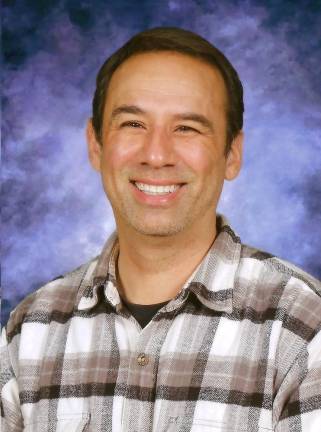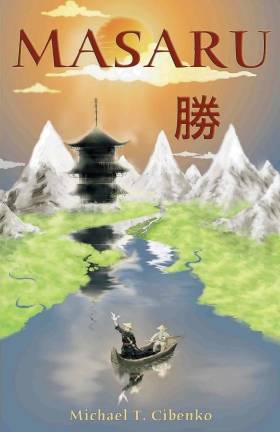Former Sparta teacher writes historical novel about early Japanese Christians
Sparta. Author Michael T. Cibenko said he once lived close to the site of an uprising of persecuted Christians in the 17th century. He was inspired by a 16-year-old samurai who helped lead the resistance.


“Masaru” is an historical novel that follows the travails of the first Japanese Christians with excellent prose and descriptions.
Author Michael T. Cibenko, who lives in Branchville, shares his expert knowledge of Japanese culture and language to create a memorable and authentic epic of early Christian Japan, a very interesting and complex period in history.
Cibenko lived in southern Japan from 1996-2000 where he was an English teacher in a rural village.
At the University of Montana, Cibenko minored in Japanese. After graduating, he landed the job teaching English in Japan through the JET (Japan Exchange and Teaching) Program. Because Montana has a sister-state relationship with Kumamoto Prefecture in the south, that’s where he was assigned. He had also asked to be sent somewhere rural because he wanted to be forced to use his Japanese. The initial job contract was for one year, but he enjoyed it so much that he ended up staying for four years.
“My home was close to the site of what is today called The Shimabara Rebellion, an uprising of persecuted Christians in the 17th century,” he said. “I was inspired by this story, in particular the person of Shiro Amakusa, a 16-year-old samurai who helped lead the resistance against the brutality of the Tokugawa shogunate. This, along with my own Japanese background, provided the impetus to write the book.”
It was in Japan where he met his wife and their first son was born.
“The decision to come back to the States was a tough one, as there are so many things I loved about Japan,” Cibenko said. “But in the end, I wanted to be close to family, and I felt my kids might have a wider range of opportunities growing up here. I’m not sure if I was right).
They returned to the U.S., and he taught both at Pope John and Sparta Middle School.
“At Pope John, I taught German, Japanese, and Theology,” he said. “In Japanese class, in addition to teaching the language, I also covered a great deal in terms of history and culture. Many of the philosophical themes that occur in the book were inspired by class discussions, especially ones that took place in the Theology classroom. Most of the book was written during the time I taught at Sparta Middle School. Although the book is for readers of all ages, I certainly had my younger students in mind as I was writing.”
Cibenko first got the idea for the book the last time he went back to Japan (about five years ago), when he visited a Shimabara Rebellion museum and saw a statue of Shiro Amakusa.
“I knew the story had all the makings of a novel or motion picture,” he said. “I started writing the book in the summer of 2019, but really kicked into high gear just after the pandemic hit (March 2020). When we started teaching remotely, I found myself with a couple hours in the day to devote to writing. The book was finished in the summer of this year, and finally went to press in September.
“I certainly hope my former students will enjoy the book. I know many of them would recognize within the pages things that were discussed in class. There were times over the years when students told me I should write a book, so I have to thank them for the encouragement.”
The book can be purchased directly through the publisher, Arx Publishing (arxpub.com). It’s also available through Amazon and Barnes & Noble and was also recently made available through Google Play. The publisher has said that an e-book version will soon be available.